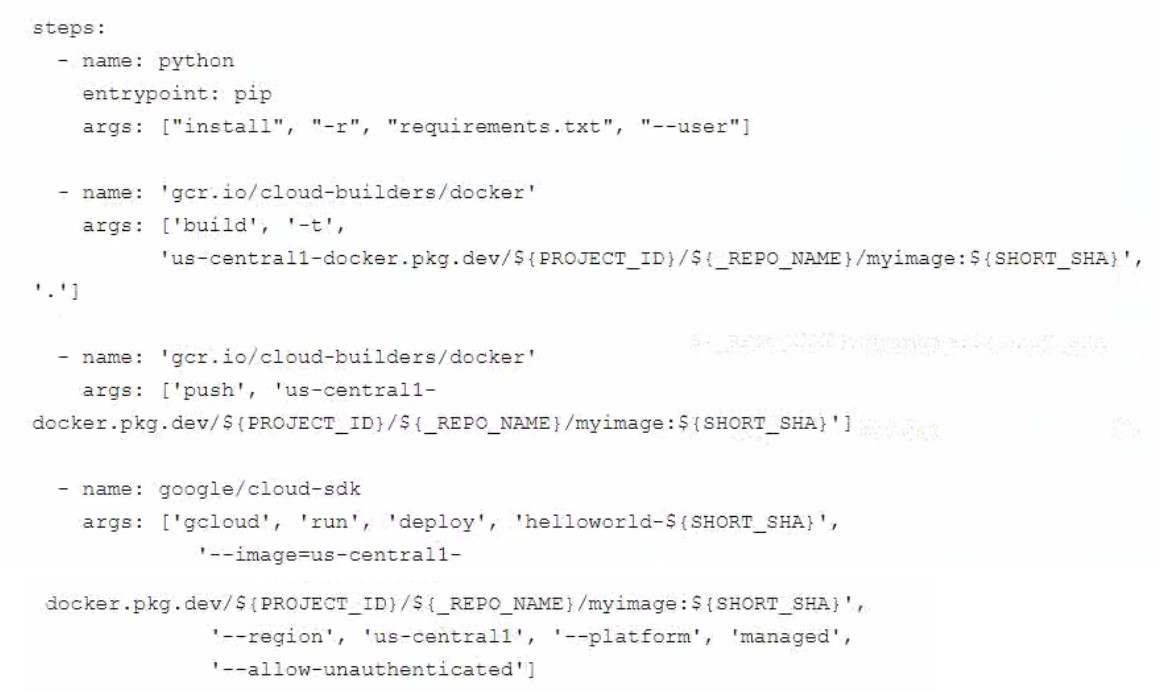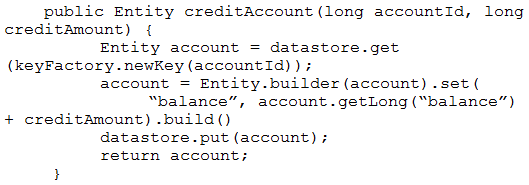
- Email support@dumps4free.com

Topic 2: Misc. Questions
The new version of your containerized application has been tested and is ready to deploy to production on Google Kubernetes Engine. You were not able to fully load-test the new version in pre-production environments, and you need to make sure that it does not have performance problems once deployed. Your deployment must be automated. What should you do?
A. Use Cloud Load Balancing to slowly ramp up traffic between versions. Use Cloud Monitoring to look for performance issues.
B. Deploy the application via a continuous delivery pipeline using canary deployments. Use Cloud Monitoring to look for performance issues. and ramp up traffic as the metrics support it.
C. Deploy the application via a continuous delivery pipeline using blue/green deployments. Use Cloud Monitoring to look for performance issues, and launch fully when the metrics support it.
D. Deploy the application using kubectl and set the spec.updateStrategv.type to RollingUpdate. Use Cloud Monitoring to look for performance issues, and run the kubectl rollback command if there are any issues.
You are deploying a Python application to Cloud Run using Cloud Build. The Cloud Build
pipeline is shown below:
You want to optimize deployment times and avoid unnecessary steps What should you do?
A. Remove the step that pushes the container to Artifact Registry.
B. Add the —cache-from argument to the Docker build step in your build config file.
C. Store image artifacts in a Cloud Storage bucket in the same region as the Cloud Run instance.
D. Deploy a new Docker registry in a VPC and use Cloud Build worker pools inside the VPC to run the build pipeline.
You are a developer at a large corporation You manage three Google Kubernetes Engine clusters. Your team’s developers need to switch from one cluster to another regularly without losing access to their preferred development tools. You want to configure access to these clusters using the fewest number of steps while following Google-recommended best practices. What should you do?
A. Ask the developers to use Cloud Shell and run gcloud container clusters get-credentials to switch to another cluster.
B. Ask the developers to open three terminals on their workstation and use kubecrt1 config to configure access to each cluster.
C. Ask the developers to install the gcloud CLI on their workstation and run gcloud container clusters get-credentials to switch to another cluster
D. In a configuration file, define the clusters users, and contexts Email the file to the developers and ask them to use kubect1 config to add cluster, user and context details.
You have written a Cloud Function that accesses other Google Cloud resources. You want to secure the environment using the principle of least privilege. What should you do?
A. Create a new service account that has Editor authority to access the resources. The deployer is given permission to get the access token.
B. Create a new service account that has a custom IAM role to access the resources. The deployer is given permission to get the access token.
C. Create a new service account that has Editor authority to access the resources. The deployer is given permission to act as the new service account.
D. Create a new service account that has a custom IAM role to access the resources. The deployer is given permission to act as the new service account.
Your teammate has asked you to review the code below, which is adding a credit to an account balance in Cloud Datastore. Which improvement should you suggest your teammate make?

A. Get the entity with an ancestor query.
B. Get and put the entity in a transaction.
C. Use a strongly consistent transactional database.
D. Don’t return the account entity from the function.
| Page 8 out of 51 Pages |
| Previous |